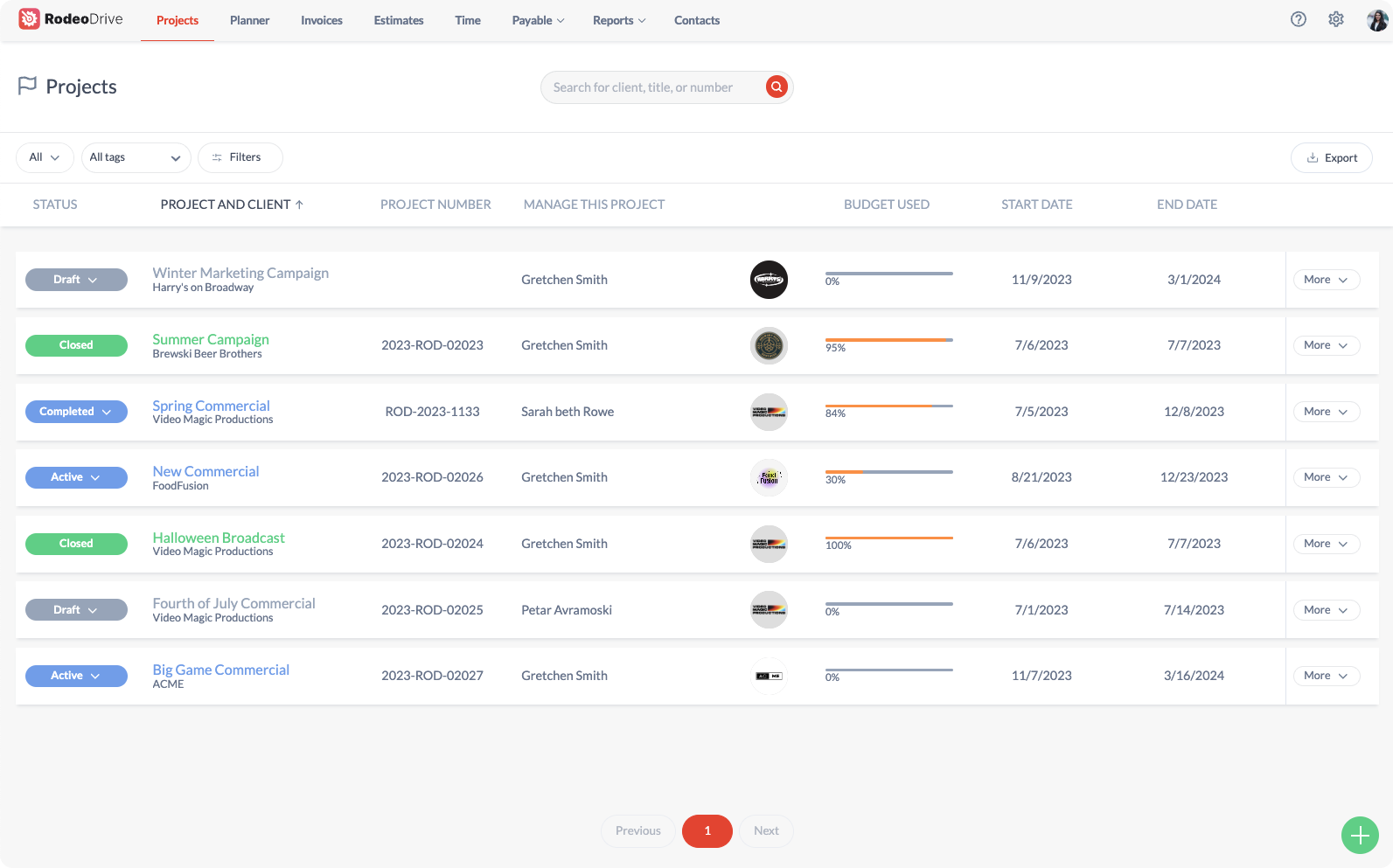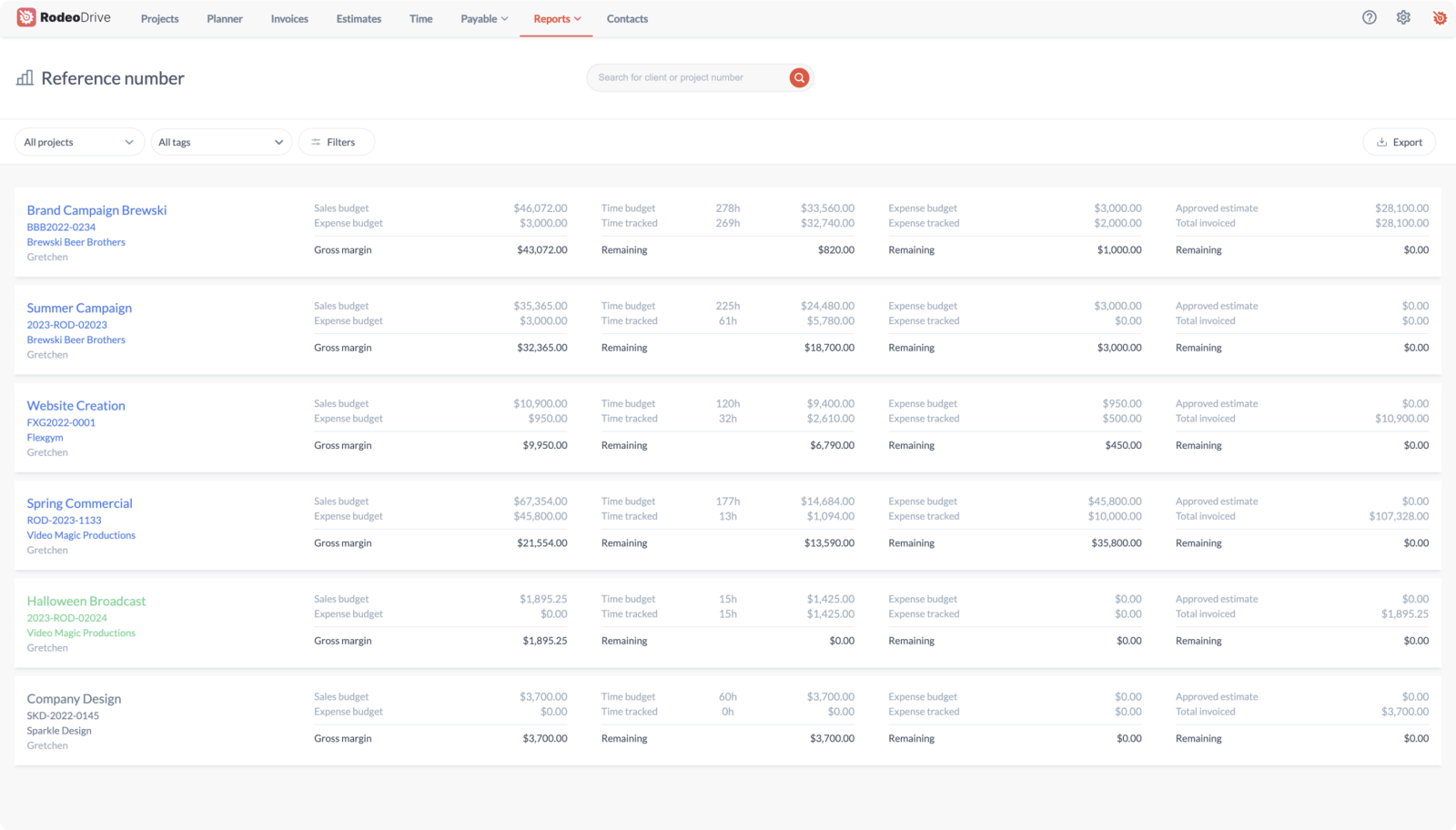A Complete Guide to Marketing Project Management
Marketing comes in many different forms with a plethora of different objectives and goals. That said, many teams struggle to deliver high-quality marketing projects on time and within budget.
Luckily, marketing project management can provide much-needed support. Project management requires extensive planning, and having to build a timeline, budget, and scope statement right from the very beginning can give marketing projects a strong foundation for the team to stick to.
In fact, project management is a growing trend across industries – not just in marketing. By 2027, employers will need 88 million workers to fill project-management-oriented roles worldwide, according to the Project Management Institute.
With the global rise of project management in mind, it’s no surprise that many marketing teams are looking to marketing project management to streamline their workflows and improve employee productivity.
In this blog, we’ll walk you through all there is to know about marketing project management, including the different types, important skills to have, steps to follow, and challenges to look out for.
What is marketing project management?
Marketing project management helps marketers properly plan, oversee, and deliver on marketing objectives using a project management framework. It helps teams manage their scope while also keeping clients and stakeholders in the loop on project progress.
The idea is that by implementing a project management framework, marketing teams can achieve their objectives on time and within budget by ensuring workflows are streamlined and everyone has a clear understanding of their roles and expectations.
Both internal marketing teams and external marketing agencies might find project management useful, as it can be used in projects featuring a range of marketing activities, such as email marketing, search engine optimization, and content creation.
There are dozens of different activities that fall under the marketing umbrella, but marketing projects must be short-term initiatives with clear objectives in order to apply a project management framework to them, as project management requires projects to be “temporary.”
For the past two decades, the top three reasons why projects fail are because scope changes after the project has begun, poor estimates during the planning phase, and insufficient resources to see the project through. Project management for marketing project managers prevents all three.
Related: The Project Management Checklist: 12 Steps to Follow

Why is project management important in marketing?
Without proper project management, it’s easy for marketing teams to lose focus or have important project information fall through the cracks. Largely because marketers tend to focus on the creative side of projects rather than the administrative side of things.
Project management involves a large investment into project planning, meaning your team members will have a solid understanding of crucial information like goals, scope, budget constraints, and project timelines right from the get-go.
Marketing projects that might get use out of project management include:
- Creating a company-wide marketing strategy for a new product launch
- Overseeing the production of a TV commercial
- Planning and carrying out social media content
- Executing a rebrand or other branding initiative
Also read: The Ultimate Guide for Creative Project Management
Project management is important in marketing specifically because it ensures that marketing team leaders are actually setting goals and holding team members accountable for meeting them.
Such goals might include growing sales revenue, increasing social media engagement rates, improving conversions, or bolstering the number of new leads generated from a campaign. All of these goals require a variety of skill sets and roles that must work together for success. Project management helps them do so by clearly defining tasks and responsibilities.
What does a marketing project manager do?
Marketing project managers are the backbone of the project. Like all project managers, they must wear many hats while helping teams overcome obstacles. They lead the way in research, communication, task management, and conflict resolution – among several other responsibilities.
These responsibilities will almost certainly include obligations like:
- Solidifying the project scope: Your scope is essentially the boundaries of your project. It outlines what objectives and deliverables are expected of the project team in order to successfully complete the project. Once the project is in motion, project managers must fend off scope creep as well.
- Prioritizing tasks and resource allocation: A project might have many objectives, but a finite amount of resources to meet those objectives. Project managers must decide which activities contribute the greatest amount of value to the project’s success and shift their team’s focus accordingly.
- Monitoring project progress and pivoting when necessary: If one part of the project is draining resources, it’s the project manager’s job to identify and rectify the issue.
- Communicating with internal and external stakeholders: Internal stakeholders include individuals from your organization with a vested interest in the success of your project. This might include the sales representative who onboarded the client, or perhaps an executive who wants to ensure the client is satisfied. Internal stakeholders aren’t always directly involved in the project execution, but they’re impacted by the project outcome in some way.
On the flip side, external stakeholders – as you might’ve guessed – are people with a stake in your project who work outside of your organization. Think of suppliers, investors, or test users as examples of external stakeholders. Because project managers typically aren’t as connected to this group, it may require extra effort to keep them updated as the project progresses.
Related: The Ultimate Guide to Managing Projects Effectively
Although the above responsibilities generally prove applicable to marketing project management across industries, marketing campaigns can widely vary, as can the types of project managers those campaigns require:
Marketing agency project manager
This is a broad category encompassing all project managers who work for marketing agencies. The project manager’s role in this setting is to ensure their team members deliver the project on time and within budget while also managing various relationships with the client and external and internal stakeholders.
Marketing project management within an agency is extremely client-facing, meaning more of the project manager’s time will be spent coordinating meetings and ensuring communication is streamlined. Having to answer to so many client and stakeholder demands can add extra pressure than other types of marketing project management.
Internal marketing project manager
Many larger organizations have internal marketing departments so that projects can be handled internally rather than having to outsource work to an agency. Marketing project managers embedded within an organization typically have a better understanding of company goals and are able to work closely with other departments to better understand their needs.
And, whereas marketing agencies might only take on certain types of projects, internal marketing teams are likely to be tasked with a wide range of marketing activities in line with their company’s current needs. With more projects on their plate, it’s likely that internal marketing managers will need to hone their prioritization skills.
Digital marketing project manager
A digital project manager is one who solely focuses on the digital side of marketing, including projects like utilizing Google Ads to drive website traffic or creating a commercial for YouTube.
Digital marketing campaigns typically involve several moving parts – such as a graphic designer and a writer to put together the ad – so this manager position should be prepared to act as a liaison between the roles.
Print marketing project manager
Print marketing managers do what you might expect – they oversee campaigns that will be physically printed. This could include a magazine ad or even a billboard. That said, as the world becomes increasingly digital, print campaigns are less prevalent.
The skills needed for this type of position are similar to other marketing project management roles, but there’s likely to be more of an emphasis on logistics since you’ll need to go about actually turning your plans into a physical campaign.
Content marketing project manager
This type of marketing project management is focused on projects that result in content production, including blogs, social media posts, or other online resources. Generally, the goal of this type of marketing is to generate interest in a product or service, so project goals typically reflect that objective.
Other types of up-and-coming forms of marketing may also fall into this category, such as projects focused on influencer marketing.
.png)
Project manager for international marketing
Companies that operate globally will likely have a need for international marketing to help build their brand. This is where international marketing managers come into play, as they utilize their expertise to decide which markets are worth targeting and how to optimize their messaging to match the needs of each customer group.
The objectives of international marketing campaigns can vary widely, although project managers in this category can expect to spend time navigating the cultural appropriateness of their campaigns while also working with marketers in other countries to prepare for launch.

Marketing program manager
This type of manager is unique in that they are tasked with monitoring the impact of numerous ongoing marketing campaigns – also known as programs – on the company’s goals. This position is much more data driven, meaning they look at marketing campaign analytics to determine which actually had an impact on metrics like revenue or churn rate.
Important skills for a marketing project manager to have
Marketing project management requires a plethora of skills to help your team run smoothly and get work done. You’ll need to possess a combination of soft, hard, and technical skills to be successful.
- Soft skills: Skills developed through experience rather than formal training or education. Soft skills typically revolve around your handling of workplace communication and relationships, which is why they’re sometimes referred to as “people skills.”
- Hard skills: These skills can be learned through formal education or training in project management. Things like budget management or risk management would fall into this category. That said, these skills can also be acquired via experience in a role, as someone who has managed dozens of projects during their career will have learned how to manage finances even if they never received formal training.
- Technical skills: These are a subset of hard skills referring to knowledge of certain methods, tools, or concepts within project management. Knowing how to implement agile methodology to a project would be an example of technical skill. However, technical skills are less critical in marketing project management because a lot of marketing work is creative and thus doesn’t require complex workflows or methodologies.

Here’s a look at a few skills that will prove invaluable in marketing project management – many of which are soft skills:
Critical thinking
Projects often revolve around evaluating a problem and deciding how to best solve it, meaning most projects require critical thinking. Strong critical thinking is more about taking the right approach rather than finding the “correct” solution. Prioritizing logic over emotion is a good place to start, and strategies like mind maps can help you think outside the box.

Communication
Regular and clear communication is absolutely critical for project success. Project teams typically have several different communication channels at their disposal, so part of the project manager’s job is to make sure everyone is on the same page regarding how and when important communication should occur. Crafting a project communication plan is often useful.
Adaptability
While project plans are nice to have, things don’t always go according to plan, which is why adaptability is a good skill to have in marketing project management. Managers should be able to smoothly guide their team members through changes in the project plan that cause the team to pivot.
Time management
In all projects – marketing or otherwise – time management is one of the most important skills for team leaders to have. There will be multiple activities requiring your attention at all times, so you’ll need to know how to allocate your time appropriately to get everything done. Time management techniques like time tracking, time blocking, or day theming can be helpful strategies for people who struggle to organize their priorities.

Negotiation
It’s not uncommon for marketing project management to require negotiation skills. Say your client wants you to stick to a timeline or budget that’s not feasible – you’ll need to advocate for your team’s needs to ensure you’re able to produce your best work.
Conflict resolution
Marketing campaigns require creativity, and team members might disagree on what the project vision should be. Successfully leading projects requires you to resolve conflicts while making all team members feel supported in their feelings.
The best course of action for resolving a dispute among team members is by sitting everyone down and allowing them to share their feelings. Next, everyone should agree upon a course of action to resolve the conflict. Try not to take sides – you’ll get more done when you act as a mediator.
Familiarity with project management software tools
While there are many simple and easy-to-use project management tools out there, it doesn’t hurt to have some familiarity with how to use them before you dive into marketing project management. While setting up your project plan, it’s useful to know how marketing project management software can streamline your workflows and plan accordingly.

For example, using Rodeo Drive can eliminate the burden of manual financial monitoring, since the project management software will automatically update your budget and generate reports in real time as your team members record their hours worked.
The marketing project management process: 8 key steps to follow
Because marketing projects vary so widely from one to the next, it’s difficult to outline steps that will be useful in every single project. For example, building an entire marketing plan or marketing campaign for a new product launch is oftentimes much more extensive and requires more planning than the process of building a single commercial.
These steps can provide a general framework for marketing projects, although you may need to modify them as necessary depending on if you’re working with an external client or internal stakeholders.
1. Determine end goals
As in any project planning phase, you’ll want to nail down your project goals and objectives early on in your planning process. Clear goal setting is key in ensuring your project team and stakeholders are on the same page and that everyone’s expectations are in alignment.
It’s also helpful to identify how you plan to quantify success. For example, if your goal is to improve conversion rates on your website, be sure to write down the percentage you want to improve them by so that you have a clear metric to measure your achievement.
There are a number of goal-setting techniques that help measure and quantify results, such as SMART goals and Objectives and Key Results (OKRs). The approach you choose will depend on what metrics you are hoping to measure and the type of goal you’re setting.
2. Conduct market research
Since marketing is all about promoting products or services, it’s crucial to have a solid awareness of other companies’ activities before launching your own campaign. After all, how are you supposed to stand out without in-depth knowledge of what your competitors are doing?
Beyond competitor research though, you should also have a comprehensive understanding of trends within the overall market. Start giving some thought as to which channels you can best reach your target audience through. Say, for instance, you’re looking to reach a younger demographic of consumers – you’ll likely find more success by launching your campaign on TikTok rather than Facebook.
3. Plan your strategy
Once you’ve solidified your goals and have a good sense of what competitors are doing and where market trends are heading, it’s time to put some thought into the strategy side of your marketing project.
This step is when you actually bring your ideas to life and create a timeline and budget for your team members to follow. By this point, you should have solidified your target audience and what your messaging will be. Be sure to use the data you collected in the previous step to help build your strategy.
4. Assign tasks and execute
So, you know what needs to get done and by when in order to complete the project objectives on time and within budget. Now what?
The next step is to distribute the work among your team members by allocating tasks according to their skill set and priority level. Deadline management once again comes into play here, as tasks should have deadlines that align with the overall project timeline. Failure to set realistic deadlines can cause parts of the project to fall behind schedule.

Once your team members have their initial tasks, it’s time for the work to begin. Managing tasks using project management software is the best way to stay up to date on where current tasks are at and how long each one is taking to complete.
5. Monitor using project controls
It’s unlikely that every project task will be completed within the deadline, which is why it’s important to implement project controls. In essence, project controls are the processes that keep projects on track from a cost and schedule perspective.
The idea is that by having a dedicated project controller to monitor the project performance data, teams can eliminate the performance gap that often arises between the project plan and execution.
For example, if it’s taking a graphic designer far longer than expected to create the visual elements for the campaign, budget spending will be far above anticipated since the designer is being paid per hour.
Ideally, the project controller would quickly identify this overexpenditure and alert the project manager, who can then investigate why it’s taking so long for the graphic designer to complete their work and mitigate the issue.
Also read: 8 Steps to Track Project Budgets (and Maximize Profits)
6. Compile deliverables
This step will look significantly different depending on your realm of marketing project management. In marketing project management at an agency, this would be the stage at which you prepare to present your work to your client.
But for an in-house marketing project management team, this might be the stage at which you put the final touches on your campaign and show your work to internal stakeholders to get their approval prior to launch.
Regardless of what this stage looks like for your team, it’s an important one, as the feedback you receive from stakeholders or clients will need to be quickly addressed prior to launching.
7. Launch the campaign
This is the stage you’ve been waiting for all along – it’s time to make your campaign live. Once again, this stage will depend on the type of campaign you’ve been working on. A marketing campaign to promote the launch of a new product will need to coincide with the date of the product launch, for instance.
At the end of the day, your goal for this stage should be to get as much engagement with your campaign as possible in order to best understand how your audience is responding to it.
8. Review results
There’s no telling how successful a marketing campaign will be before it launches, which is why it’s important to monitor and review your campaign results. By collecting this type of data, you’ll be able to see how your campaign’s performance measures up to the success metrics you outlined in the first step.

Additionally, this type of performance data is essential in determining how you can improve your campaign strategy for future projects. Maybe one part of the campaign underperformed – if so, it’s important to note that and try something different next time.
Top 5 challenges when managing marketing projects
Marketers are sometimes resistant to the implementation of a project management process because they perceive regimented methodologies as limiting their creativity.
In reality, though, project management practices can actually help marketing teams establish more of a foundation to operate within, ultimately helping them better showcase their creative work. By clearly defining the roles and responsibilities of each team member, everyone can better understand the interdependencies of the project and get their work done on time.
Here are 5 other challenges that are most common in marketing project management:
1. Leading a cross-functional team
Whereas teams involved in more standard forms of project management involve team members who are used to working in a project-based environment, many marketing teams are cross-functional, meaning they’re an eclectic mix of people with a variety of skills to contribute who are not always used to project-based work.
This is particularly true for internal marketing teams who don’t always tackle initiatives in a project format. And whereas typical project teams tend to handle all pieces of the project on their own, marketing teams might outsource parts of the project more frequently – such as by hiring a PR firm to oversee the press related to a new product launch, for example.
Additionally, marketing lacks the kinds of regimented processes and methodologies that are commonplace in project management, which is another reason why it can be difficult to get marketing teams on board with a methodology.
.png)
2. Properly managing risks
Risk management is a critical part of project management that’s often a foreign concept to many marketing teams, thus making it difficult to implement. In essence, risk management is the process of identifying, evaluating, and monitoring risks that can hinder a project's success.
The trick with risk management is to identify your risks before the project work begins – ideally in the planning stage. This is because the number of risks you’re likely to encounter can determine your path forward. You might decide not to proceed with a particular project path if there are too many risks threatening the availability of resources you need to complete it.
3. Deadline mismanagement
Deadline management is something that most teams struggle with, as nothing ever goes perfectly according to plan. Missed deadlines can occur for a variety of reasons, including a lack of accountability, poor communication, unclear expectations, or overly ambitious goals.
This can be solved with deadline management – a process where the project manager prioritizes, organizes, and plans every project activity so that outlined deadlines are manageable and achievable.
4. Scope creep
Scope creep is when new project requirements or objectives are added by the client or stakeholders after the project is already underway. This is common among marketing projects when team leaders don’t solidify the project requirements during the planning phase.
Ensuring everyone agrees on the project objectives before the project kicks off is the best way to prevent scope creep. Beyond this, should stakeholders ask you to expand the project scope, ensure you’re clearly communicating your team’s limitations and why expanding the project requirements isn’t feasible.
5. Lack of centralized place for project information
Marketing projects come with many dependencies, meaning one person’s next task might rely on another team member finishing their tasks on time. This is just one reason why using marketing project management software is crucial to keep all project information accessible in one place.
With the right marketing software, you can check the status of tasks in real time and record your hours as you work to ensure you’re properly compensated for your time.
Additionally, marketing projects can involve several streams of communication, so having a main place to communicate with team members is just another safeguard to prevent things from slipping through the cracks or getting lost in communication.
Using a project management tool to manage marketing projects
As we’ve already discussed, utilizing marketing project management software will save you valuable time and money while working on marketing projects. Because marketers tend to focus more on the creative rather than the administrative side of things, you’ll want a project management tool that’s built for creatives – like Rodeo Drive.
Rodeo Drive makes it easy to manage your projects at every stage of their project life cycle. All projects in Rodeo Drive start with a detailed, phase-based project budget, which you’ll customize to meet your needs. From there, you’re able to export your budget as an estimate ready for client approval, and invoice clients from the platform once you’ve started working on the project.
Did we mention that all of Rodeo Drive’s features are interconnected? This means that your budget will update in real-time as you record your hours worked, and you’ll be able to instantly view metrics on your project progress via Rodeo Drive’s automatically generated reports.
With Rodeo Drive, you’ll be able to spend more time doing what you do best – creating. Get started for free today.








